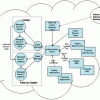Strategic advice to leverage new technologies
Technology is at the heart of nearly every enterprise, enabling new business models and strategies, and serving as the catalyst to industry convergence. Leveraging the right technology can improve business outcomes, providing intelligence and insights that help you make more informed and accurate decisions. From finding patterns in data through data science, to curating relevant insights with data analytics, to the predictive abilities and innumerable applications of AI, to solving challenging business problems with ML, NLP, and knowledge graphs, technology has brought decision-making to a more intelligent level. Keep pace with the technology trends, opportunities, applications, and real-world use cases that will move your organization closer to its transformation and business goals.
Recently Published
In my last Advisor (see "Understand the Value Equation," 12 January 2011), I talked about the architecture value equation and the role of architectural views in creating value. To refresh your memory, the equation says that if you make it easier for someone to do their job using architecture, then they’ll use it. To achieve that requires the appropriate view.
In my last Advisor (see "Understand the Value Equation," 12 January 2011), I talked about the architecture value equation and the role of architectural views in creating value.
One of the biggest concerns among organizations when it comes to adopting mobile BI is security [1]. This is hardly surprising, given that security has always been a major concern of any mobile corporate application, particularly the fear of unauthorized access to, or loss of, sensitive corporate data.
Happy New Year. The last decade was certainly an interesting one, but one that I wouldn't want to relive -- too much conflict, too much hype, too little real dialog, too little data .... You get my point. My holidays were unusually busy, including a lot of travel, a lot of family, and a lot of time to think and some time to read and collect my thoughts.
Intelligent Application Deployment: The Last Automation Frontier
All lifecycle methodologies initiate themselves with some concept of requirement. That is true whether they are waterfall-like, OO (e.g., RUP), or even the parsimonious agile methodology. In business applications, forward engineering usually involves further automating some back-office or mission-critical application, and the requirements for the system may be satisfied, so to speak, with a custom or package solution.
In this on-demand webinar, William Ulrich outlines practical approaches to business-driven, IT architecture transformation using real world case studies and examples.














